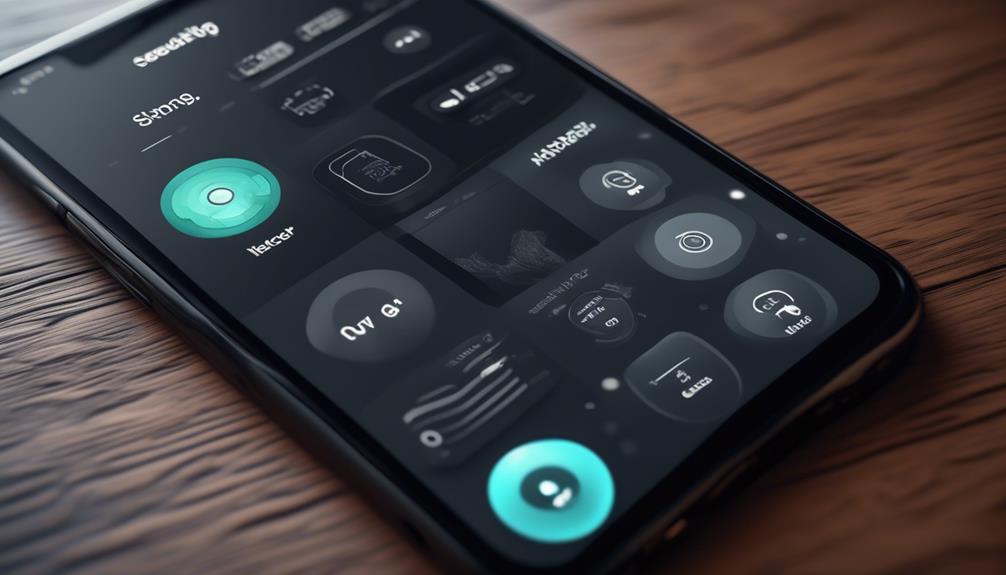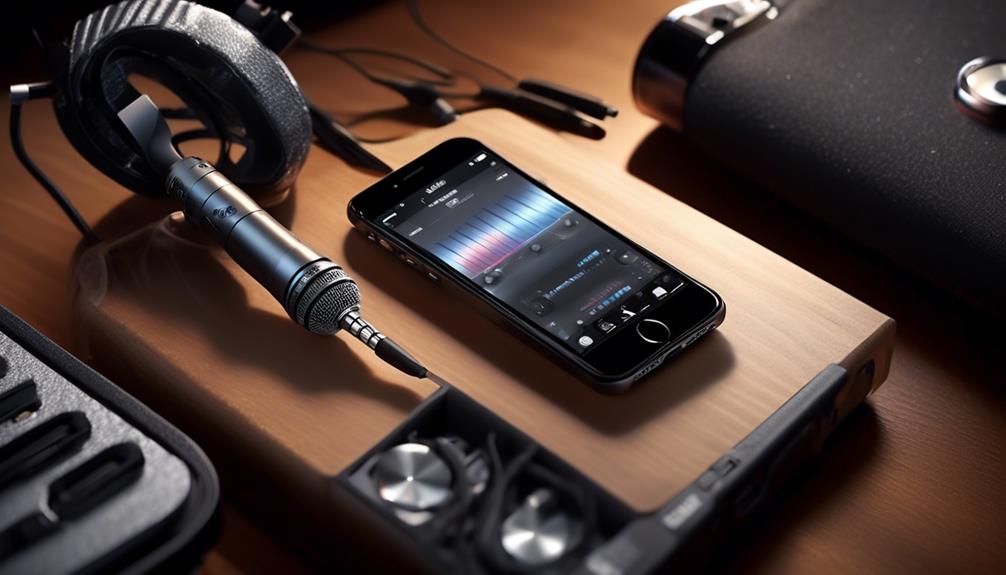Have you ever experienced the sinking feeling of losing something important? That sense of panic when you realize that a valuable piece of information could be lost forever?
Well, when it comes to call recordings, the question of whether they are backed up is a crucial one. We all know the importance of these recordings, but do we actually take the necessary steps to ensure they are securely backed up?
Let's explore the world of call recording backups and discover the best practices for safeguarding these valuable pieces of information.
Key Takeaways
- Call recordings are crucial evidence in legal disputes and for quality assurance in customer service.
- Regularly backing up call recordings prevents loss and provides a safety net for critical data.
- Utilizing encryption and secure backup solutions helps ensure the security of call recordings.
- Call recordings can be accessed and recovered using file manager apps, card readers, or professional data recovery software.
Importance of Call Recording Backups
Ensuring the preservation of call recordings through reliable backups is essential for safeguarding critical information and maintaining compliance with legal requirements.
Call recordings serve as crucial evidence in legal disputes and are valuable for quality assurance in customer service. They provide a reference for important details discussed during calls and can help in resolving misunderstandings or disputes.
Moreover, call recordings are instrumental for training and improvement purposes, making their backups important for future reference.
Regularly backing up call recordings to separate storage or cloud can prevent their loss and provide a safety net for critical data. In the event of accidental deletion or technical issues, having an effective backup solution is vital.
Understanding the legal implications of call recording recovery and ensuring compliance with relevant regulations is crucial. It's also imperative to consider the use of Android data recovery tools to recover deleted call recordings, ensuring that no important data is permanently lost.
Best Practices for Call Recording Backup

We recognize the critical need for implementing best practices for call recording backup to ensure the preservation and protection of valuable data. When considering the best practices for call recording backup, it's essential to focus on the following:
- Regular Backups: Schedule regular backups of call recordings to a secure location, such as an external storage device or a trusted cloud service like Google Drive. This ensures that even if data is deleted, a recent backup can be accessed for recovery.
- Data Type Consideration: Differentiate call recordings from other data types and ensure that the backup process includes all relevant file formats and associated metadata to enable comprehensive recovery.
- App-Based Backup: Utilize reputable apps designed for call recording backup to streamline the process and automate regular backups. These apps often offer additional features such as encryption and selective backup options, enhancing data protection.
Ensuring Security of Call Recordings
Securing call recordings is a critical aspect of data protection, and it requires careful consideration of storage methods and access controls. Ensuring the security of call recordings is vital to prevent unauthorized access, loss, or deletion of important data. To emphasize the importance of securing call recordings, let's explore the various methods and tools available for ensuring the security of these valuable assets.
| Security Methods | Description |
|---|---|
| Encryption | Utilize encryption to protect call recordings from unauthorized access. |
| Access Controls | Implement strict access controls to limit who can view, modify, or delete call recordings. |
| Secure Backup | Use secure cloud backup solutions for call recordings to prevent data loss in case of device failure or loss. |
| Data Recovery Tools | Leverage professional data recovery software such as EaseUS Data Recovery Wizard for Android to recover lost or deleted call recordings. |
Accessibility of Call Recordings

After emphasizing the importance of securing call recordings, it's essential to understand the accessibility of these valuable assets, as they can be recovered from various sources such as the phone's internal storage, SD card, or backups.
- Internal Storage: Call recordings are often stored in the internal memory of an Android phone. Utilizing file manager apps or connecting the device to a computer can facilitate the retrieval of these recordings, even if they've been deleted.
- SD Card: If the call recordings were saved on the SD card, they can be accessed by removing the card and using a card reader to connect it to a computer. Alternatively, Android devices can be connected directly to a computer to access the SD card content.
- Backups: Call recordings that have been backed up, either through built-in backup features or third-party apps, can be restored from these backups. This is especially useful for recovering deleted call recordings or restoring recordings after a factory reset.
Understanding the accessibility of call recordings is crucial for ensuring that these important assets can be retrieved when needed. Whether through the phone's internal storage, SD card, or backups, the ability to recover and restore call recordings is essential in preserving vital information contained in voice recordings and call logs.
Methods for Call Recording Recovery
Recovering call recordings from various sources, such as a phone's internal storage, SD card, or backups, can be accomplished using different methods and tools to ensure the preservation of these valuable assets. For Android users, there are several options available to recover deleted call recordings. One method is to use specialized Android data recovery apps such as EaseUS MobiSaver for Android, which can scan the device's internal storage and SD card to retrieve deleted data, including call recordings. Another effective approach is to utilize professional data recovery software like EaseUS Data Recovery Wizard, which offers more advanced features for recovering deleted data, including call recordings from backups or directly from the device.
To emphasize the different methods and tools available for call recording recovery, the table below outlines the various options and their features:
| Recovery Method | Key Features | Compatibility |
|---|---|---|
| Android Data Recovery Apps | Scan internal storage and SD card for deleted data, including call recordings without root access | Android devices |
| Professional Data Recovery Software | Recover deleted data, including call recordings from backups or directly from the device, advanced features | Android and PC compatibility |
Frequently Asked Questions
How Do I Find My Call Recording Backup?
When looking for call recording backups, we consider various aspects like cloud storage, data retention, and backup options.
The retrieval process, legal requirements, and security measures also play crucial roles.
Access control, storage capacity, and recording formats are important factors to consider while ensuring compliance with regulations.
It's essential to understand the nuances of call recording backups to ensure their proper management and retrieval.
Are Call Recordings Saved?
Yes, call recordings are saved securely with encryption methods and cloud storage to ensure data security, privacy concerns, and compliance with legal requirements.
Our system manages recording retention, access control, and follows compliance regulations.
The storage capacity allows for efficient data recovery while maintaining the highest standards of security.
How Can I Get Call Recording History?
To retrieve call recording history, we access call logs and use secure methods to ensure call recording security and privacy.
Managing call recordings involves exporting, organizing, and ensuring proper storage and retention.
We prioritize call recording playback and organization to meet legal and operational needs.
Following best practices, we safeguard call recordings and prioritize their accessibility for dispute resolution, customer service, and training.
What Do Companies Do With Recorded Calls?
We ensure data security, customer privacy, and legal compliance in handling recorded calls. Our storage capacity allows for retention, while recordings support employee training, quality assurance, and performance evaluation.
We leverage call analytics for dispute resolution and continuously review our practices to meet evolving privacy laws and consent requirements.
Our stringent protocols prioritize the ethical and secure use of recorded calls, reflecting our commitment to excellence.
How Can I Ensure That My Call Recordings Are Properly Backed Up?
When it comes to ensuring that your call recordings are properly backed up, it’s essential to have a reliable system in place. One way to achieve this is by using automated software that regularly backs up your recordings to a secure location. This ensures that your recorded call location discovery is always accessible.
Conclusion
In conclusion, backing up call recordings is crucial for their safety and accessibility. It ensures that important information isn't lost and can be easily retrieved when needed.
Just like a safety net for tightrope walkers, call recording backups provide a sense of security and peace of mind, knowing that important conversations are always within reach.
Remember to regularly backup your call recordings to avoid any potential data loss.










